| << Chapter < Page | Chapter >> Page > |
The flux of the electric field through any closed surface S (a Gaussian surface) is equal to the net charge enclosed divided by the permittivity of free space
To use Gauss’s law effectively, you must have a clear understanding of what each term in the equation represents. The field is the total electric field at every point on the Gaussian surface. This total field includes contributions from charges both inside and outside the Gaussian surface. However, is just the charge inside the Gaussian surface. Finally, the Gaussian surface is any closed surface in space. That surface can coincide with the actual surface of a conductor, or it can be an imaginary geometric surface. The only requirement imposed on a Gaussian surface is that it be closed ( [link] ).
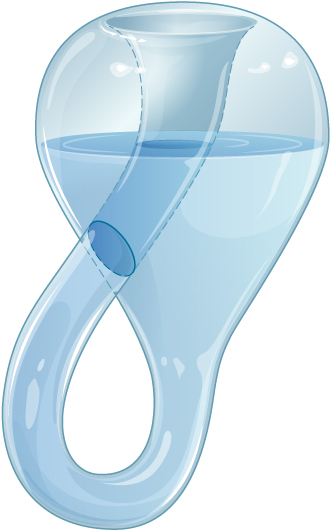
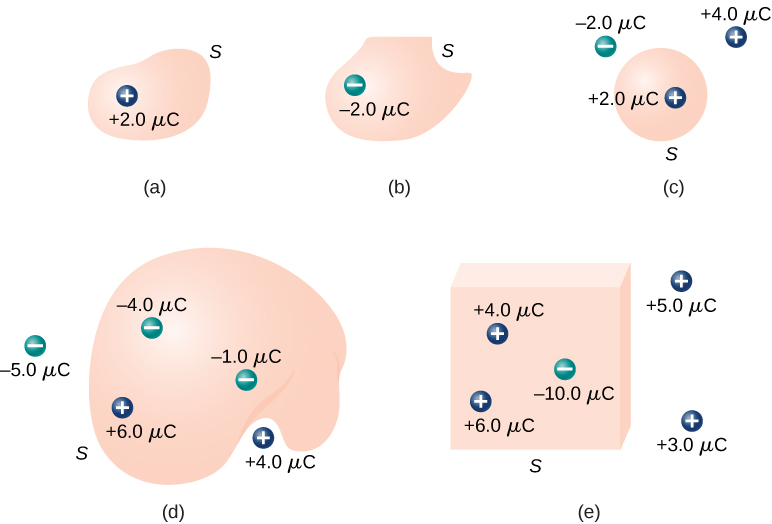
Check Your Understanding Calculate the electric flux through the closed cubical surface for each charge distribution shown in [link] .
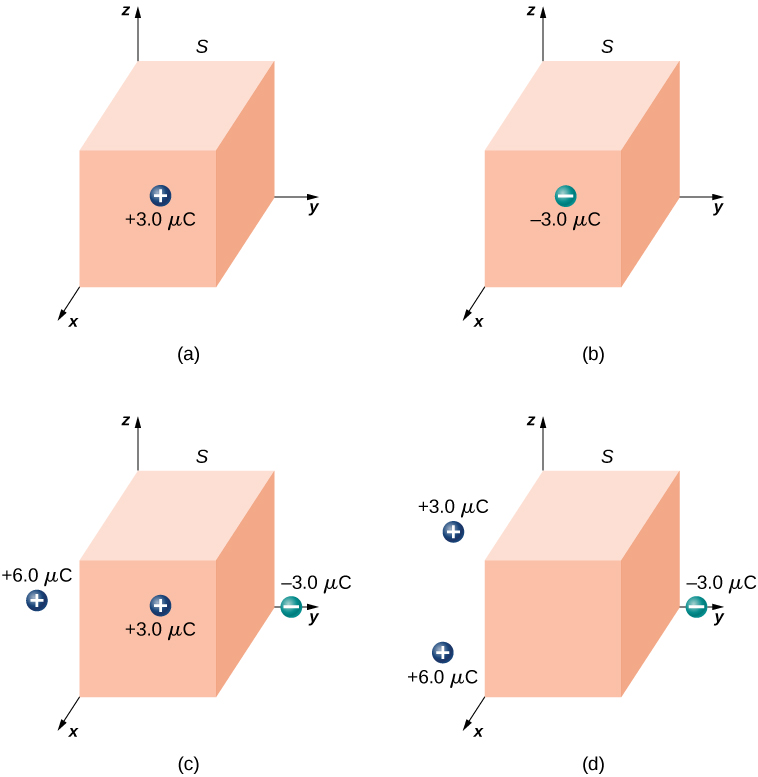
a. b. c. d. 0
Use this simulation to adjust the magnitude of the charge and the radius of the Gaussian surface around it. See how this affects the total flux and the magnitude of the electric field at the Gaussian surface.
Two concentric spherical surfaces enclose a point charge q . The radius of the outer sphere is twice that of the inner one. Compare the electric fluxes crossing the two surfaces.
Since the electric field vector has a dependence, the fluxes are the same since .
Compare the electric flux through the surface of a cube of side length a that has a charge q at its center to the flux through a spherical surface of radius a with a charge q at its center.
(a) If the electric flux through a closed surface is zero, is the electric field necessarily zero at all points on the surface? (b) What is the net charge inside the surface?
a. no; b. zero
Discuss how Gauss’s law would be affected if the electric field of a point charge did not vary as
Discuss the similarities and differences between the gravitational field of a point mass m and the electric field of a point charge q .
Both fields vary as . Because the gravitational constant is so much smaller than , the gravitational field is orders of magnitude weaker than the electric field.
Discuss whether Gauss’s law can be applied to other forces, and if so, which ones.
Is the term in Gauss’s law the electric field produced by just the charge inside the Gaussian surface?
No, it is produced by all charges both inside and outside the Gaussian surface.
Reformulate Gauss’s law by choosing the unit normal of the Gaussian surface to be the one directed inward.
Determine the electric flux through each surface whose cross-section is shown below.
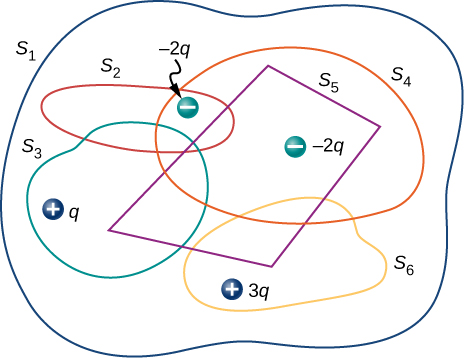
Find the electric flux through the closed surface whose cross-sections are shown below.

a.
; b.
;
c.
;
d.
A point charge q is located at the center of a cube whose sides are of length a . If there are no other charges in this system, what is the electric flux through one face of the cube?
A point charge of is at an unspecified location inside a cube of side 2 cm. Find the net electric flux though the surfaces of the cube.
A net flux of passes inward through the surface of a sphere of radius 5 cm. (a) How much charge is inside the sphere? (b) How precisely can we determine the location of the charge from this information?
A charge q is placed at one of the corners of a cube of side a , as shown below. Find the magnitude of the electric flux through the shaded face due to q . Assume .
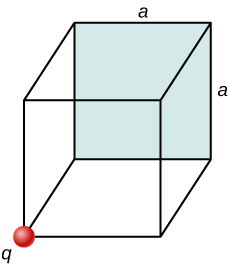
Make a cube with
q at the center, using the cube of side
a . This would take four cubes of side
a to make one side of the large cube. The shaded side of the small cube would be 1/24th of the total area of the large cube; therefore, the flux through the shaded area would be
.
The electric flux through a cubical box 8.0 cm on a side is What is the total charge enclosed by the box?
The electric flux through a spherical surface is What is the net charge enclosed by the surface?
A cube whose sides are of length d is placed in a uniform electric field of magnitude so that the field is perpendicular to two opposite faces of the cube. What is the net flux through the cube?
Repeat the previous problem, assuming that the electric field is directed along a body diagonal of the cube.
zero, also because flux in equals flux out
A total charge is distributed uniformly throughout a cubical volume whose edges are 8.0 cm long. (a) What is the charge density in the cube? (b) What is the electric flux through a cube with 12.0-cm edges that is concentric with the charge distribution? (c) Do the same calculation for cubes whose edges are 10.0 cm long and 5.0 cm long. (d) What is the electric flux through a spherical surface of radius 3.0 cm that is also concentric with the charge distribution?

Notification Switch
Would you like to follow the 'University physics volume 2' conversation and receive update notifications?